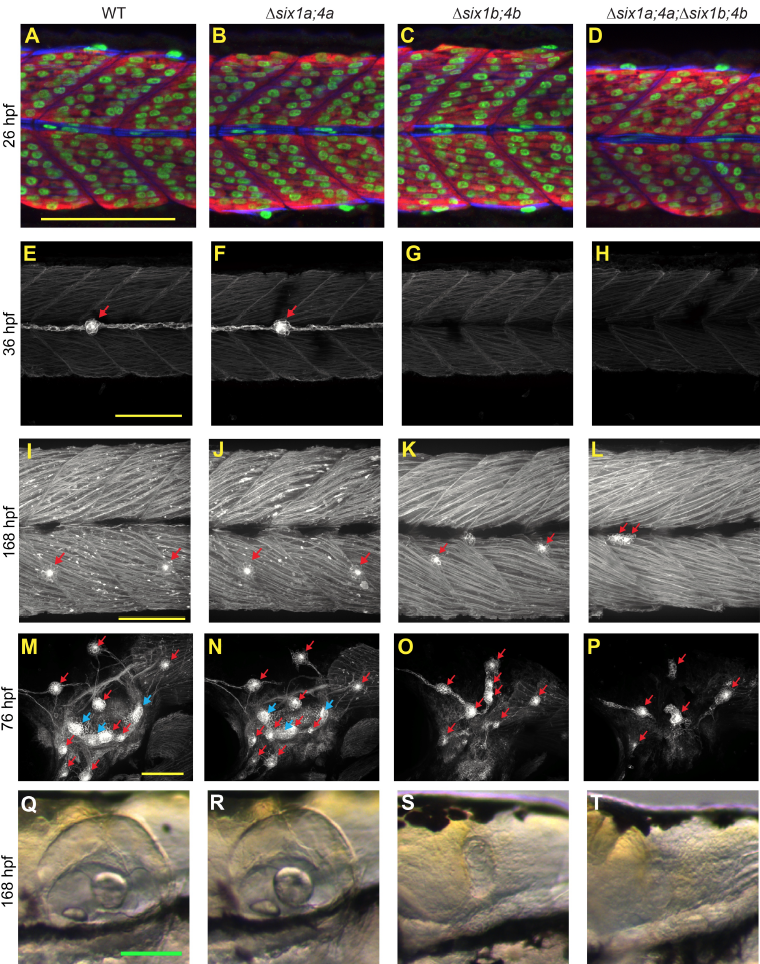Fig. S3
six1b/six4b function is essential for lateral line and ear formation. (A-D) Trunk muscle at 26 hpf, labeled for myosin heavy chain marker A4.1025 (blue), the myosin light chain marker F310 (red), and the myonuclei marker Rbfox1l (green). Both slow and fast muscle morphology appears normal in six family compound mutants. (E-P) Confocal projections of six1b:lyn-GFP transgene-expressing embryos. At 36 hpf, the lateral line and neuromasts (red arrows) are absent in the trunk ofΔsix1b;4b homozygotes and Δsix1a;4a;Δsix1b;4b mutants (E-H); however, neuromast development partially and variably recovers by 7 days post fertilization (I-L). In WT and Δsix1a;4a mutants, the ear maculae and cristae are marked by the six1b:lyn-GFP transgene (green arrows); these ear sensory epithelia are lost in Δsix1b;4b homozygotes and Δsix1a;4a;Δsix1b;4b mutants (MP). While head neuromasts (red arrows) persist in these mutants, they are mis-localized within the region where the ear would normally form. (Q-T) Live brightfield images showing ear morphology in wild-type and six family compound mutant embryos at 168 hpf. All scale bars are 100 μm.

